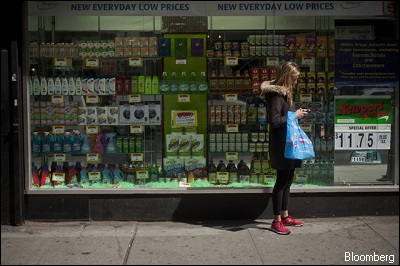
|
|

|
|
| April 24, 2024 |
|
Economy grew at 2.5 percent in 1st quarter, amping fears of a stalled recovery 
New government data released Friday showed the economy expanded at an annual rate of 2.5 percent during the first three months of the year, slower than economists expected. Many have already begun warning that the recovery has cooled even more since then.
The disappointing report reveals that the economy did not have as much momentum as was hoped. And it’s likely to make it even more difficult for the country to shake off any hits from higher taxes and the federal spending cuts known as the sequester that are beginning to eat away at household budgets. Economists expect those factors to pare the rate of growth during the second quarter to between 1 and 2 percent. “The economy is already slowing, and new crisis threatens,” said Peter Morici, a professor at the University of Maryland’s Robert H. Smith School of Business. Markets showed little reaction to the news in morning trading. A little after 10 a.m., the Dow Jones index was up 0.1 percent, and the Standard & Poors and Nasdaq were slightly down. The biggest single driver of growth over the winter was a surge in business inventories, contributing about one percentage point of growth. But economist Ben Herzon of Macroeconomic Advisers noted that most of that stockpiling was done in January. Consumer spending was also strong during the first quarter, rising 3.2 percent. Analysts have attributed the jump to the large number of bonuses paid late last year to avoid the bite of higher taxes this year. Consumers likely spent that extra money in the first quarter, so the bonuses probably won’t boost spending over the rest of the year. In fact, some data suggest households are already beginning to draw back as higher payroll taxes squeeze paychecks. Housing also slowed down some over the winter. Although residential investment rose at an annual rate of 12.6 percent, that compares to a jump of more than 17 percent the previous quarter. The return of the housing market has been a major force in the recovery, but sales have been hurt by tight inventory and the number of homeowners still underwater. The GDP report underscores the unevenness of this recovery, which has been particularly volatile during the past year. Last spring, the economy was treading water with a 1.3 percent growth rate. Things seemed to kick into high gear over the summer as the pace of growth picked up to more than 3 percent. But by the end of the year, momentum had stalled. Fourth-quarter GDP growth was an anemic 0.4 percent. “In sum, the economy will exhibit from quarter-to-quarter special factors to push growth higher or lower, but in the end it will continue to revert back to its mean real growth path of around 2.5 percent,” said Steve blitz, chief economist at ITG. Some economists have dubbed the current slump a “spring swoon.” For the past three years, job growth has inexplicably slowed down in the spring, although that has not always translated into weaker GDP. The next monthly unemployment report is due in a week, and economists will be watching it closely to determine whether a plunge in job creation in March was an anomaly or indicative of broader weakness in the labor market. But Herzon said that the core of the economy, consumer spending and fixed investment in assets such as housing and factory machinery, remains strong. In fact, he estimates that together those sectors will grow at a slightly faster rate during the second quarter, even as the broader economy drags. (Source: The Washington Post) Story Date: April 27, 2013
|